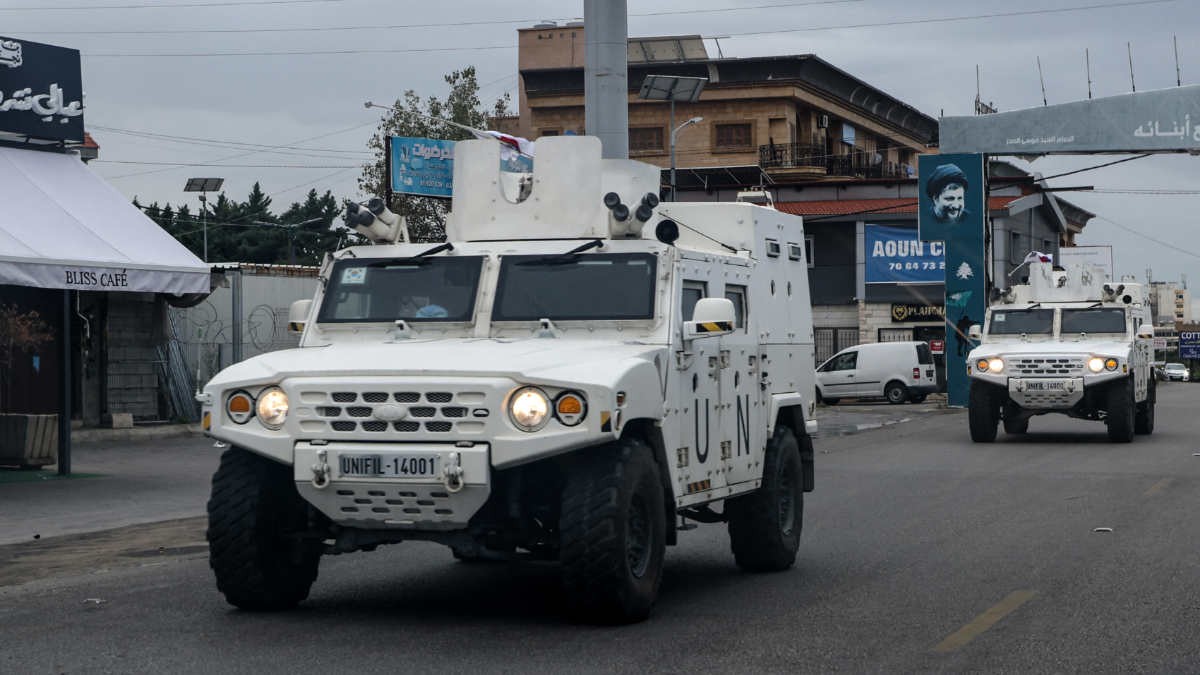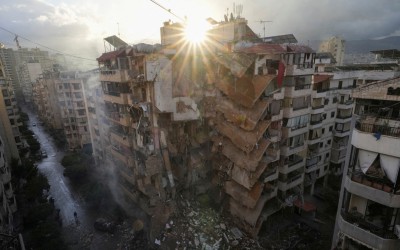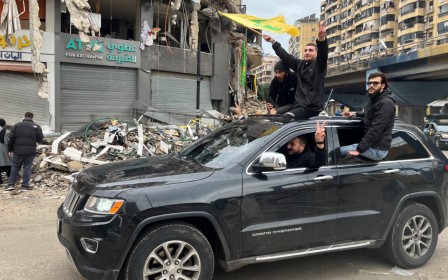Shaky Lebanon ceasefire rests on Netanyahu's restraint and Hezbollah's firepower

A US-brokered ceasefire between Israel and Hezbollah in Lebanon relies on two key assumptions: the diminished power of Hezbollah as a fighting force and Israel’s restraint in responding to potential ceasefire violations.
On paper, the ceasefire that ended fighting between Hezbollah and Israel early on Wednesday morning is clearly stacked in Israel's favour, and Arab officials and analysts have told Middle East Eye that a depleted Hezbollah was looking for a break.
“The ceasefire is an important transaction, but not a transformation. It happened because Israel wanted it and Hezbollah needed it,” Aaron David Miller, a former Middle East negotiator, told MEE.
Hezbollah and Israel have both agreed to withdraw their forces from southern Lebanon within 60 days, but unlike the deal that ended their 2006 war, the US’s footprint to police the group’s exit has expanded.
The US has also codified Israel’s right to preemptively strike Hezbollah if it believes the group is re-arming.
New MEE newsletter: Jerusalem Dispatch
Sign up to get the latest insights and analysis on Israel-Palestine, alongside Turkey Unpacked and other MEE newsletters
The details of a side letter codifying Israel's rights to respond were confirmed by a senior US official to MEE. The letter gives American backing to Israel to launch strikes on Hezbollah if the group reconstitutes in southern Lebanon, imports weapons, or if Israel says Hezbollah is positioning itself in a way that Israel says is a threat.
"The entire deal depends on how much leeway [Prime Minister Benjamin] Netanyahu is willing to give Hezbollah. It is entirely up to him,” Patrick Theros, a former US ambassador to Qatar, told MEE.
“Hezbollah is going to try and regain prestige and will slow walk its withdrawal."
What makes the deal so shaky is that it leaves several unresolved questions, including whether Hezbollah fighters remaining in their local villages in southern Lebanon constitutes a violation of the ceasefire. Israel has used AI technology to target Hezbollah fighters and has shown it can track their movements.
Theros estimates that 35,000 Hezbollah fighters hail from southern Lebanon.
Analysts say Israel is likely not to raise the issue with the US and will focus on the withdrawal of missiles and artillery.
But if Hezbollah withdraws its heavy weaponry north of the Litani River, it can still station it in the Shia-majority Bekaa Valley, keeping towns in northern Israel within range of long-distance rockets.
How will Hezbollah reassert itself?
The ceasefire, on paper, reaffirms previous UN Security Council resolutions that effectively call for Hezbollah’s total disarmament.
“The question is how much is Israel willing to let go in terms of violations and how much can Hezbollah absorb. I suspect Hezbollah has been weakened enough not to respond to Israel if it takes preemptive action,” Miller said.
The ceasefire, in effect, rests on US assessments that Hezbollah has been weakened enough by Israeli strikes on its senior leadership and arms supplies, and the group will not cross Israel’s red lines.
But while Hezbollah's leadership has been dealt severe blows, there is little evidence to categorically assert that it has been depleted as a fighting force. Israel's invasion of southern Lebanon has few achievements to boast.
However, analysts say that Hezbollah's ability to fight Israel may come second to its domestic priorities, as the group may be willing to abide by Israel’s hard red lines because its internal position is shaky.
After the 2006 war between Israel and Hezbollah, Lebanon’s government sensed weakness and, led by Sunni and Druze political parties, tried to reduce Hezbollah’s sway inside the country. Hezbollah forces took control of parts of Beirut in 2008, sparking street fights between Sunnis and Shias.
“Hezbollah definitely needs to reassert itself in Lebanon because it looks so weak right now, but not by opening fire on Israel. It needs to focus on Lebanese internal politics,” Theros said.
US to increase surveillance
The US has tried to layer the ceasefire to put distance between Hezbollah and this Israeli military option.
US military advisors are being deployed to Lebanon to monitor Hezbollah’s withdrawal from the south, and a Centcom official is expected to chair a committee to enforce the deal, MEE revealed previously.
A US defence official also told MEE that the US is deploying additional intelligence, surveillance and reconnaissance capabilities to monitor Hezbollah’s withdrawal, including drones and geospatial intelligence to track the group.
The US says it will work with the Lebanese Armed Forces and a beefed-up UN peacekeeping force that is set to include hundreds of new French troops to stop Hezbollah from rearming in the south.
But realities on the ground in Lebanon mean the UN and Lebanese army are unlikely to have the heft to counter any Hezbollah violations.
The Lebanese army is a multi-confessional force that includes Shia and Sunni Muslims along with Christians. It has been reluctant to use force to disarm Hezbollah, which is Lebanon’s most popular Shia political party and the world’s largest armed non-state actor.
“We should assume Hezbollah will try to re-infiltrate southern Lebanon as soon as possible,” Daniel Mouton, a former National Security Council official now at the Atlantic Council, told MEE.
Mouton added that if the Lebanese military intervenes, it would be "a recipe for another Lebanese Civil War," adding that "if Unifil does not respond, the Israelis will. But that does not necessarily mean a wider war resumes.”
Israel has already taken action against Hezbollah without the group responding. On Wednesday, it arrested four Hezbollah fighters in southern Lebanon, hours after the ceasefire went into effect.
“It will be important to watch and see if Israel is forced to strike Hezbollah again in a large-scale manner. If Hezbollah takes it on the chin, it will give us an indication of how badly they have been hurt in the last weeks,” Mouton said.
Middle East Eye delivers independent and unrivalled coverage and analysis of the Middle East, North Africa and beyond. To learn more about republishing this content and the associated fees, please fill out this form. More about MEE can be found here.





